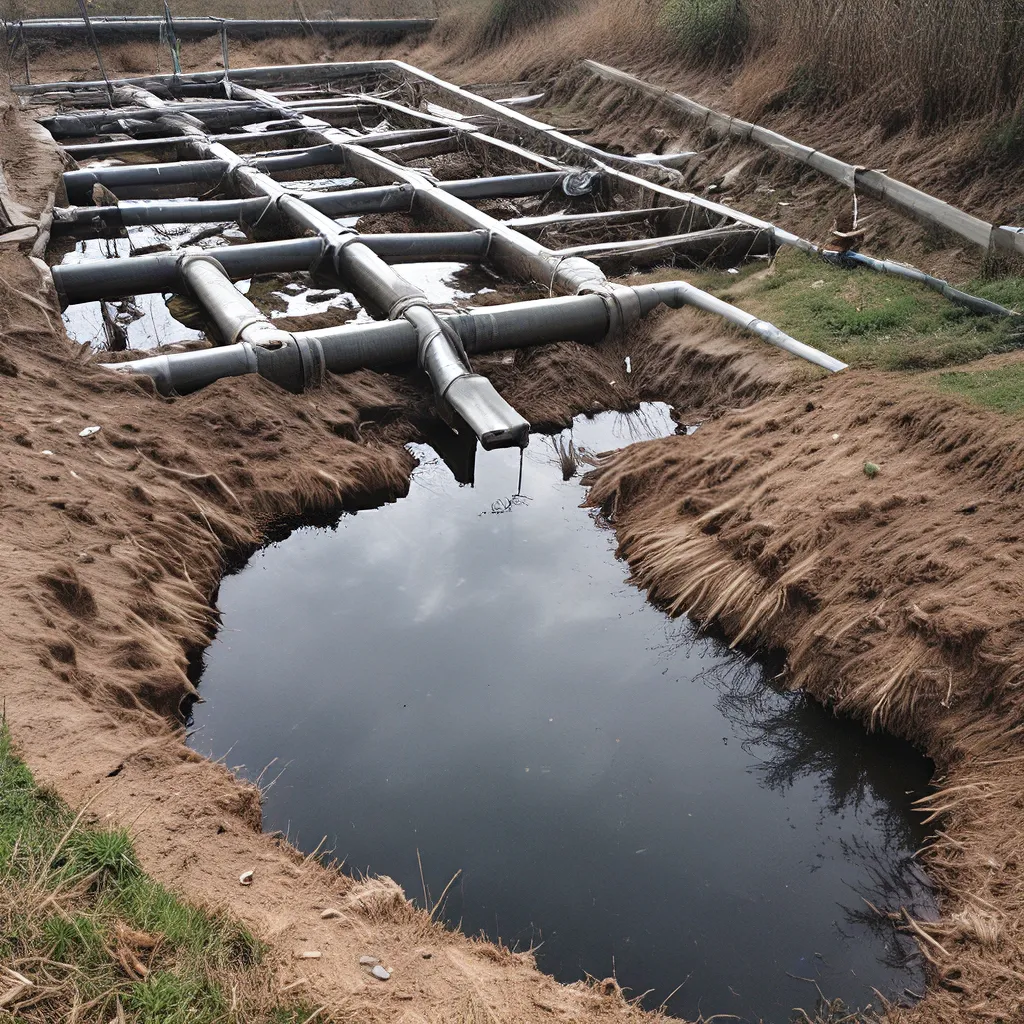
From Niche to Necessity: The Rise of Wastewater Surveillance
I remember the first time I heard about wastewater-based epidemiology (WBE) – it sounded like something out of a sci-fi novel. Little did I know that this innovative approach to public health monitoring would become an indispensable tool in the global fight against pandemics.
It all started back in the early 2000s, when a team of researchers at the Mario Negri Institute in Italy began using WBE to track illicit drug use in communities. The idea was simple – analyze the chemical and biological signatures in wastewater to gain insights into the habits and behaviors of the population. Who would have thought that this same technique could one day be used to detect the presence and spread of deadly viruses?
Fast forward to 2020, and the COVID-19 pandemic thrust WBE into the global spotlight. As healthcare systems struggled to keep up with traditional epidemiological surveillance, public health authorities around the world turned to wastewater analysis as a complementary tool to track the virus. Suddenly, what was once a niche academic pursuit had become an essential part of the pandemic response.
The Power of Wastewater: Revealing the Unseen
One of the key benefits of WBE is its ability to capture the whole population, including those who may be asymptomatic or unable to access clinical testing. In Brazil, for example, WBE data helped to uncover the effects of stark inequalities and environmental injustice, shedding light on vulnerable populations that were not adequately represented in official COVID-19 statistics.
But WBE’s potential goes far beyond just tracking infectious diseases. This powerful tool can also be used to monitor a wide range of public health parameters, from drug and alcohol use to exposure to environmental contaminants and dietary patterns. Imagine being able to get a real-time, comprehensive snapshot of a community’s health and wellbeing – that’s the promise of WBE.
Overcoming Challenges: Towards Automation and Sustainability
Of course, implementing WBE is not without its challenges. One of the biggest hurdles is the need for efficient sample collection, processing, and data analysis – a process that can be time-consuming and resource-intensive. That’s where the concept of an “End-to-End (E2E) WBE solution” comes into play.
Researchers are working hard to develop automated, integrated systems that can streamline the entire WBE process, from sample acquisition to data communication. These cutting-edge technologies aim to reduce the time between sample collection and data provision to just a matter of hours, allowing public health authorities to respond more quickly to emerging threats.
But the benefits of E2E WBE go beyond just speed – it’s also about sustainability and scalability. By minimizing the need for manual intervention, these systems can be deployed more widely, enabling local, regional, and even global surveillance networks. Imagine a future where every community passively contributes to a vast, interconnected network of public health data, providing early warning signals for the next pandemic or environmental crisis.
Embracing the Future: Wastewater Surveillance in the 21st Century
As I reflect on the evolution of WBE, I’m struck by how quickly it has gone from a niche academic pursuit to a global public health imperative. The COVID-19 pandemic has been a wake-up call, demonstrating the critical role that wastewater surveillance can play in safeguarding our communities.
But the true potential of WBE lies in its ability to transcend the boundaries of infectious disease monitoring. By integrating WBE into the suite of services offered by wastewater treatment providers like Alpha Wastewater, we can unlock a wealth of insights that can inform public health policies, guide targeted interventions, and ultimately, improve the overall wellbeing of our communities.
As we look to the future, I’m excited to see how WBE will continue to evolve and be applied in innovative ways. Will we one day be able to predict the next pandemic before it even starts? Or track the prevalence of chronic diseases with unprecedented accuracy? The possibilities are endless, and I can’t wait to see what the future holds.
Embracing the Uncertain: The Promise and Peril of Wastewater Surveillance
Of course, as with any powerful tool, WBE also comes with its fair share of challenges and uncertainties. Interpreting the data and translating it into meaningful public health actions can be a complex and often uncertain process. And as WBE becomes more widely adopted, there will undoubtedly be ethical considerations and privacy concerns that will need to be carefully navigated.
But I believe that the potential benefits of WBE far outweigh the risks. By embracing the unknown and being willing to experiment and adapt, we can harness the power of this technology to create a healthier, more resilient future for all.
The Future is Wastewater: Embracing the Possibilities
As I think about the future of WBE, I’m filled with a sense of excitement and optimism. By working with forward-thinking wastewater treatment providers like Alpha Wastewater, I believe we can unlock a new era of public health surveillance – one that is more responsive, more inclusive, and more effective than ever before.
Whether it’s tracking the spread of emerging diseases, monitoring environmental exposures, or even predicting the next pandemic, the possibilities of WBE are truly limitless. And as we continue to push the boundaries of what’s possible, I’m confident that we’ll uncover insights and solutions that will transform the way we protect and enhance the health of our communities.
So let’s embrace the uncertainty and the challenges that come with this innovative approach. Because when it comes to safeguarding the wellbeing of our world, I believe that the future is wastewater.